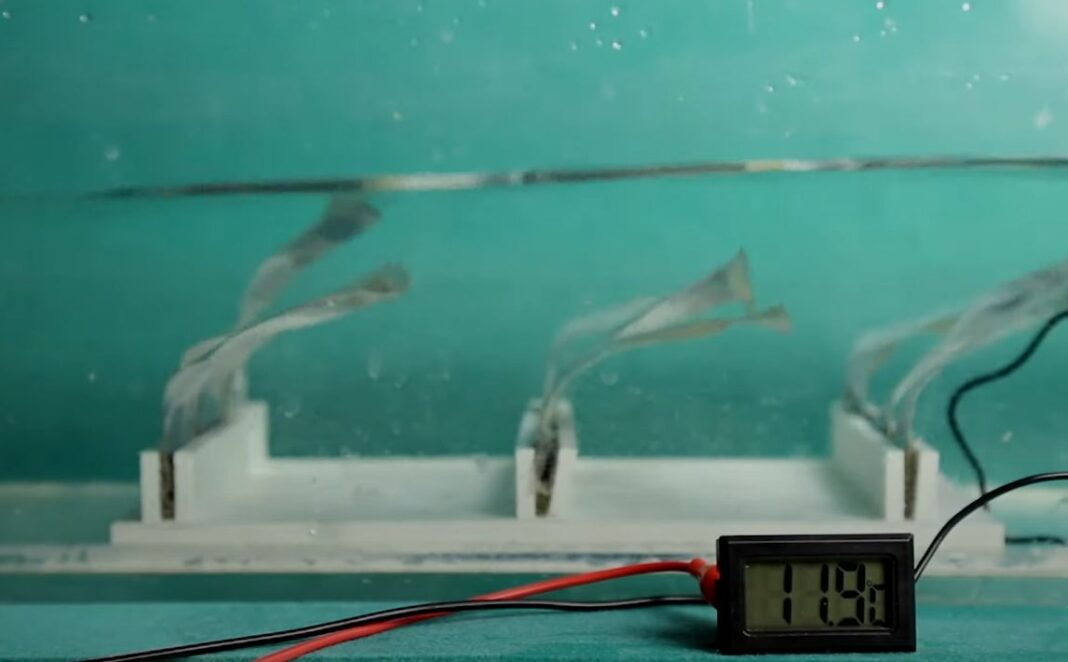Nature is the inspiration that has given rise to many groundbreaking inventions. Have you ever seen seagrass? It sways under the sea there and back again. Seagrass moves under underwater waves. The waves contain a lot of energy and this has led scientists to create flexible generators that are similar to seagrass. Wave energy has great potential. The problem is high costs, wave turbines are usually large and expensive. However, researchers have created a generator that is not large, but rather small. It uses energy from underwater sea waves.
A generator inspired by seagrass
Behind this idea is Minyi Xu, a professor of marine engineering at China’s Dallan Maritime University and a visiting scholar at the Georgia Institute of Technology. He was was speaking with Zhong Lin Wang, founding director of Georgia Tech’s Center on Nanoscience and Nanotechnology, about how to develop quiet, environmentally-friendly ocean energy harvesters.
“Professor Wang mentioned that seaweed vibrates softly in ocean flow and can live well even in huge waves,” Xu said. Thanks to this, the inspiration for the production of a flexible electricity generator came.
Using triboelectric nanogenerators, or TENGs — devices that generate electricity from the transfer of electrons between two surfaces. When two surfaces rub against each other, static electricity is generated.
Various materials and waterproofing methods have long been studied. The work was recently published in the journal ACS Nano. The device includes layers of FEP, a material often used for flexible tubing, and PET, coated in conductive inks.
How does the device work?
The device is flexible and moves according to submarine waves. As they move, the layers of the device touch and then split. This is how electricity is generated. The device was thoroughly tested in a water tank. 1.5-by-3-inch strips of the seaweed-like TENGS generated enough power to light up 30 LEDs.
“With the large-scale installation underwater, high-power electrical appliances could be powered,” Xu said.
Importantly, this device will have a much smaller impact on marine life. Large devices produce noise and heat. Smaller equipment is a better solution for generating electricity.
These generators could power a wide range of electronics that are used in coastal areas. These include water quality sensors or devices that help ships navigate.
“These seaweed-like TENG systems can be integrated with those ocean sensors to form a self-powered monitoring system,” said Xu.
The researchers are planning to develop a small-scale underwater power station made of these seaweed TENGS to test their performance in a real ocean. If this equipment is used on a large scale, it can become a significant source of electricity. Professor Xu’s estimates are promising. If this equipment were used in large quantities over an area comparable to the size of Georgia, it could produce enough electricity for the whole world.
Source:
https://pubs.acs.org/doi/10.1021/acsnano.1c05127
Image credit: American chemistry society (ACS)

















